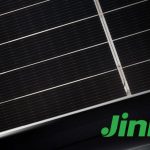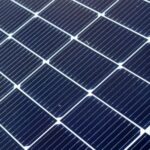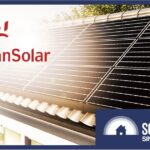Latest CEA solar panel supplier report shows trends of larger wafers and increased global manufacturing capacity
Solar and storage technical advisory Clean Energy Associates (CEA) has released its latest PV Supplier Market Intelligence Program Report and comments on the solar industry’s evolution to larger wafer sizes, additional global manufacturing capacity and gallium doping.
The latest report, available by subscription, covers which suppliers have already adopted 182-mm (M10) or 210-mm (G12/M12) wafers, which are still taking a wait-and-see approach, and rollout plans by PV module manufacturing leaders. As the industry continues to add capacity, CEA projected in its prior quarterly report that 180 GW of module capacity will be online by the end of 2020. With the market still feeling the effects of recent polysilicon production disruptions, the report takes a closer look at available supply and its implications for 2021.
Report highlights:
- LONGi reclaims its spot as the global leader in the module and cell production, adding 10 GW of new module capacity and 7.4 GW of new cell capacity to reach 23.5 GW of total module production and 17 GW of total cell production. The expansion is projected to continue with a minimum of 5 GW of additional module capacity and several gigawatts of additional cell capacity by the end of the year.
- Larger wafer adoption leads suppliers to settle into “wafer alliances” based around adopting the same wafer size. The biggest technological contributor for this trend is the introduction of the G12 and M10 wafers, scarcely a year after 166-mm (M6) wafers became standard. In general, manufacturers that have large in-house wafer capacity and higher vertical integration prefer the M10 wafer size over the G12, since the cost of vertically upgrading wafer, cell, and modules lines, as required by migration to the G12 platform, is very high. While major suppliers aim to release new large wafer products at the end of this year, smaller suppliers continue to wait for the dust to settle before choosing a size, and a dense interconnection technology, for the coming years. And the residential market may require different configurations before converting.
- LONGi is the leading M10 wafer producer while TZS is leading in G12.
- Gallium-doped cell adoption is on the rise. JA Solar and LONGi have adopted gallium-doped cells, which have less LID and may offer better LeTID performance. With the expiration of the key patent for gallium doping in April 2020, several other manufacturers are also committed to gallium doping.
“We expect to see multiple wafer sizes on the market for some time, as suppliers seek new ways to reduce cost, increase value for buyers and differentiate their products. This unprecedented innovation simultaneously brings uncertainty, as suppliers adopt the wafer platform, the interconnection platform, and optimize the overall module,” said Paul Wormser, VP, Technology of Clean Energy Associates.
Companies analyzed in the report are: Astronergy, BYD, Canadian Solar, First Solar, GCL, Hanwha Q CELLS, JA Solar, Jinergy, JinkoSolar, Jolywood, LONGi, Risen, Talesun, Phono Solar, and Trina Solar. It follows new developments in 600-W+ module rollout (with a special section on dense cell-to-cell interconnection risks).
The complete report, authored by CEA’s Technology and Quality team, is available by subscription and includes insights gathered from 1-on-1 interviews with the technical leaders at many of the industry’s leading suppliers. A sample of the report can be downloaded for free here.
News item from CEA
You may also like:
<!–
–>
Original Source: https://www.solarpowerworldonline.com/2020/10/latest-cea-solar-panel-supplier-report-shows-trends-of-larger-wafers-and-increased-global-manufacturing-capacity/











